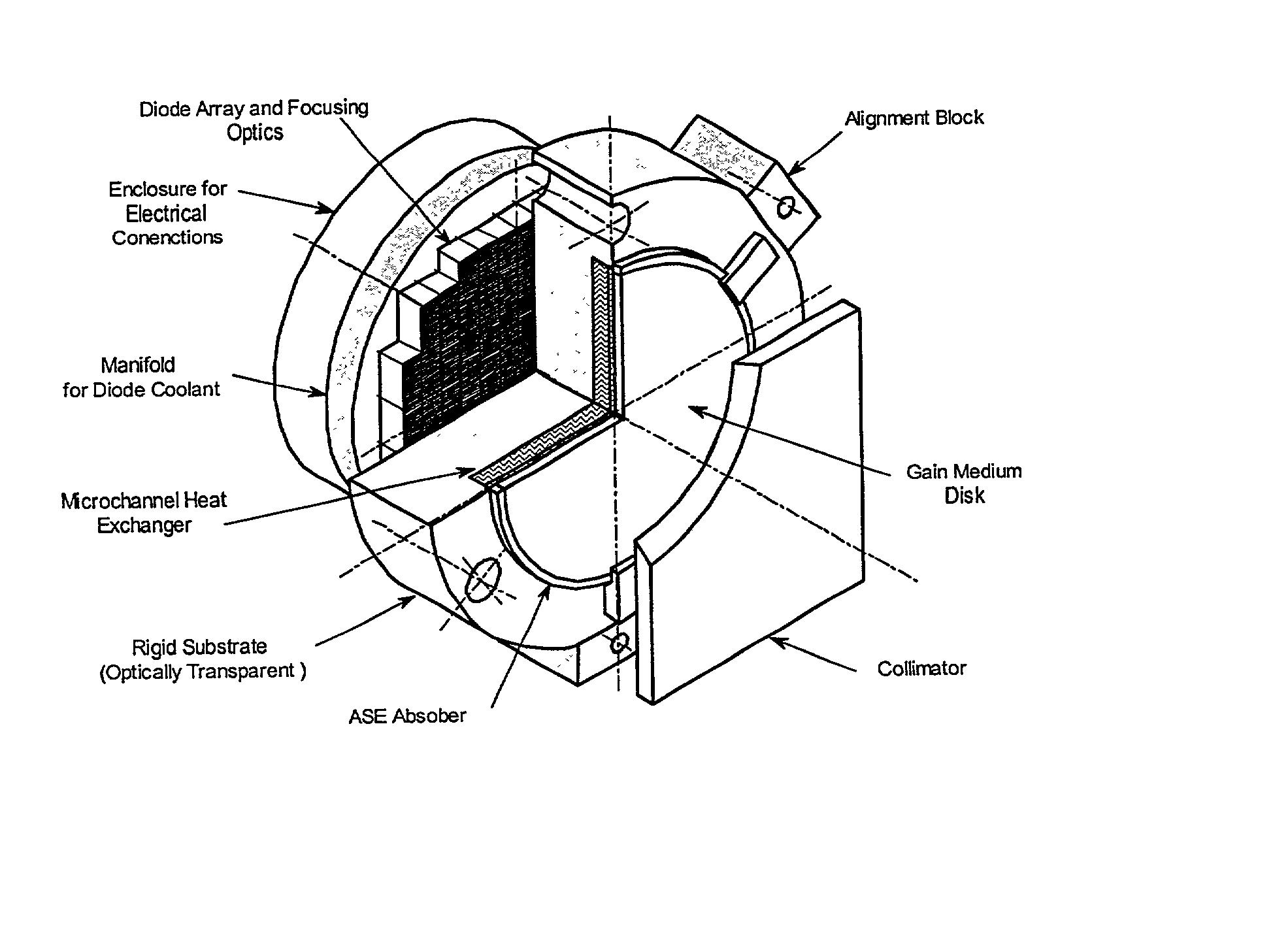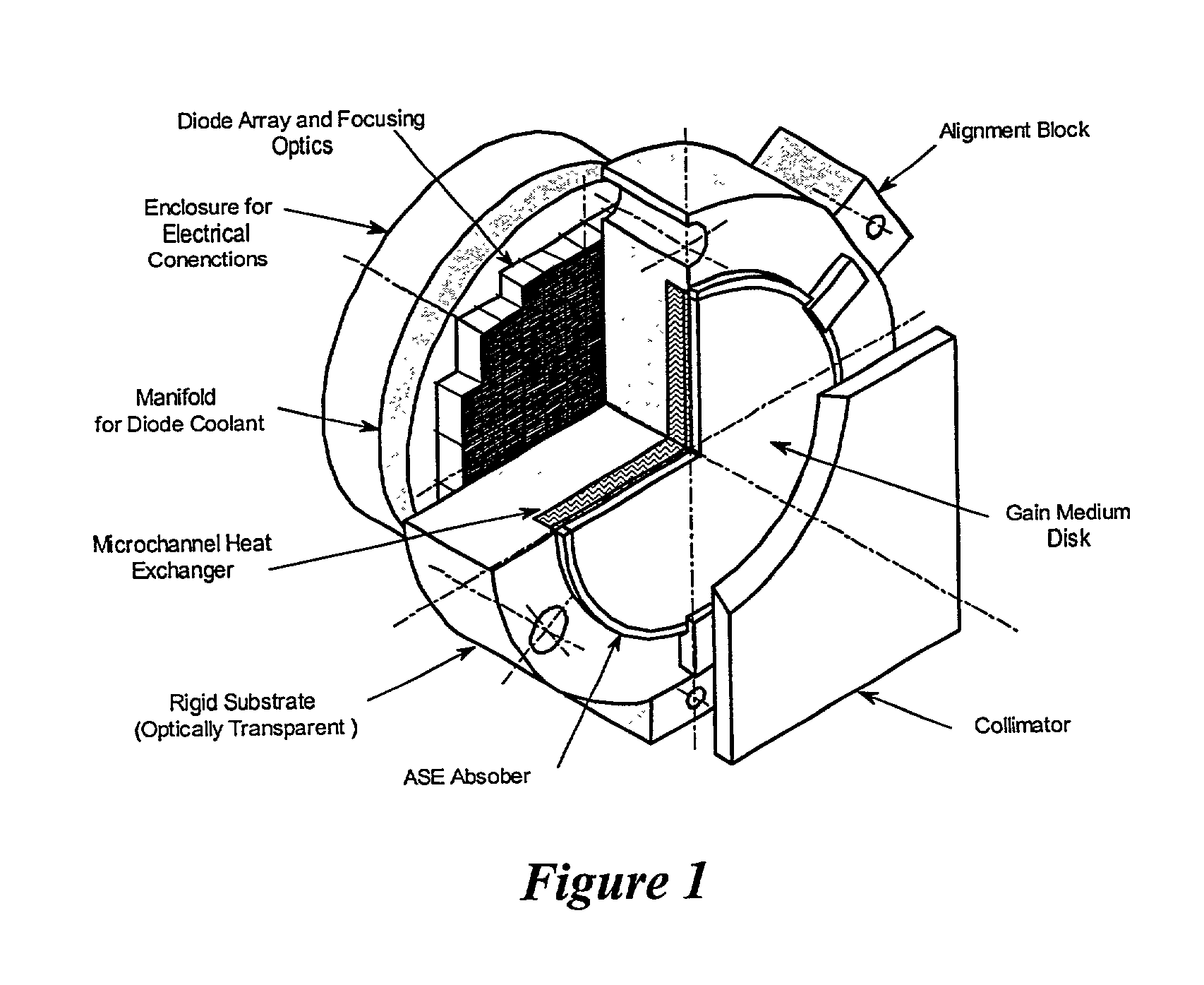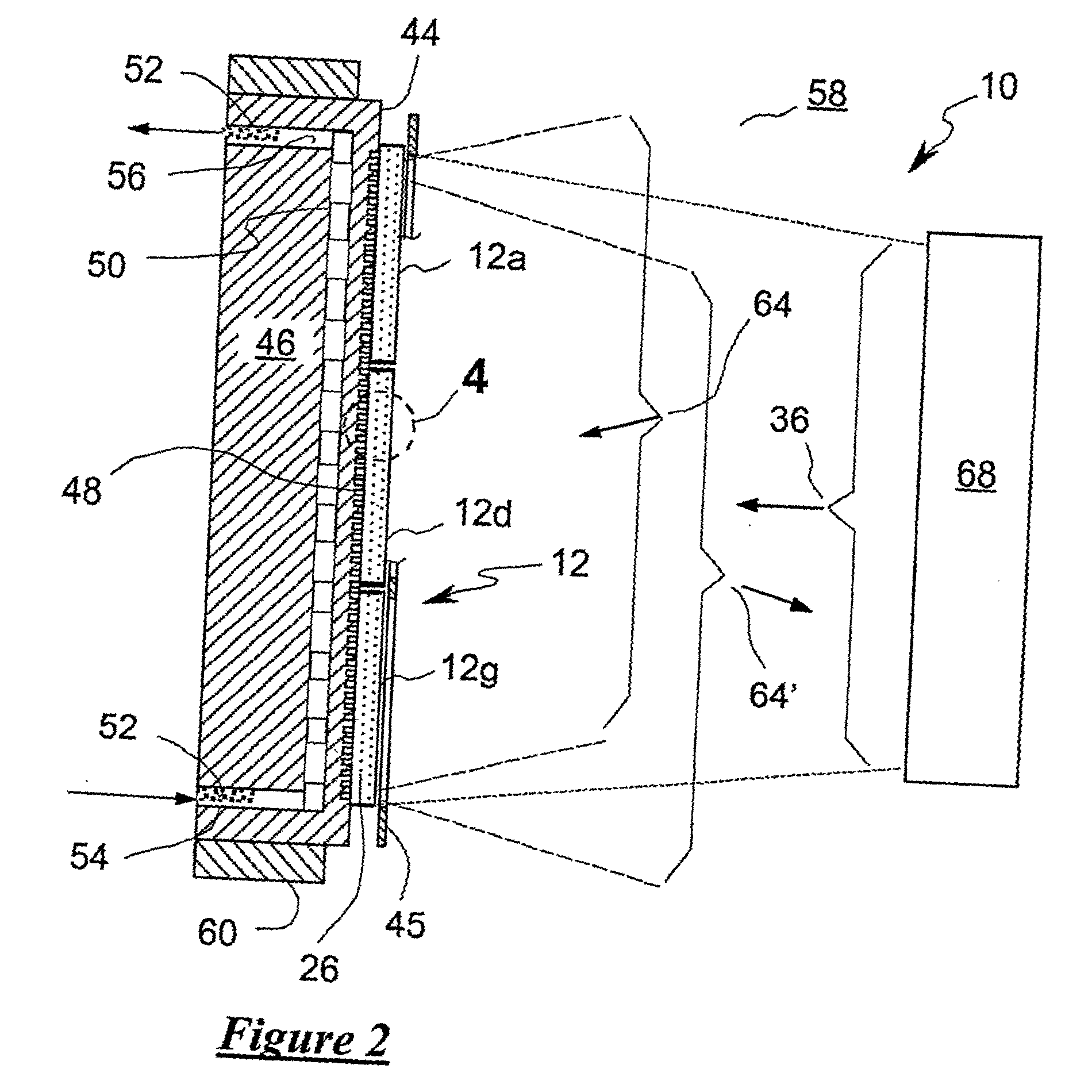High-average power active mirror solid-state laser with multiple subapertures
a technology of active mirror and solid-state laser, which is applied in the direction of laser cooling arrangement, laser details, active medium materials, etc., can solve the problems of inconvenient operation of devices at hap, inconvenient operation of devices, and inability to achieve the effect of accurate optical path length
- Summary
- Abstract
- Description
- Claims
- Application Information
AI Technical Summary
Benefits of technology
Problems solved by technology
Method used
Image
Examples
first embodiment
[0072] The substrate 146 is generally same as the substrate 46 of the invention, but it is made of a material optically transparent to the pump radiation 36. A preferred material is fused silica or sapphire but other optical materials transparent to the pump radiation 36 and suitable for microchannel fabrication can be used. The thickness of the substrate 146 is chosen to provide mechanical rigidity necessary to assure that the surface 44 remains optically flat under operational conditions. The substrate 146 can be fabricated by ultrasonic machining of the microchannels 48 and the concomitant distribution channels into several plates of glass, crystal or other suitable material, and diffusion bonding the plates into a single monolithic unit. Such a fabrication process is currently used by the assignee of the present invention to fabricate high-power, actively-cooled optics. To reduce scattering losses of pump radiation 36, coolant 52 can be chosen to have an index of refraction near...
third embodiment
[0079] Substrate 246 practiced with the subject invention is of the same general construction and provides the same function as in the first preferred embodiment of the invention. The substrate 246 can either be cooled by an internal heat exchanger or provide coolant directly into the microchannels 48 which allows it to directly wet large portions of the back surface 24 of the composite gain medium 212. The latter is particularly suitable for operation at increased power density since the heat generated in the composite gain medium 212 is conducted through the surface 24 and the optical coating 70 directly into the coolant. Coolant pressure is substantially lower than the pressure of atmosphere 58 to assure a positive attachment of the composite gain media 212 to the substrate 246. Suitable coolants may include liquids such as deionized water, alcohol, members from the Freon.RTM. family, and liquid nitrogen, and certain liquid metals. Positive contact between the back surface 24 of ...
PUM
 Login to View More
Login to View More Abstract
Description
Claims
Application Information
 Login to View More
Login to View More - R&D
- Intellectual Property
- Life Sciences
- Materials
- Tech Scout
- Unparalleled Data Quality
- Higher Quality Content
- 60% Fewer Hallucinations
Browse by: Latest US Patents, China's latest patents, Technical Efficacy Thesaurus, Application Domain, Technology Topic, Popular Technical Reports.
© 2025 PatSnap. All rights reserved.Legal|Privacy policy|Modern Slavery Act Transparency Statement|Sitemap|About US| Contact US: help@patsnap.com



